The Noble Dome introduces a valuable advancement in microanalysis techniques by attaching a glove box directly to a SEM/FIB. While traditional loading methods expose samples to atmosphere during transfer, the Noble Dome preserves the integrity of air-sensitive materials by transferring them in and out of an instrument in an oxygen-free environment. This attachment addresses the challenge of loading air-sensitive samples into instruments with a practical and innovative approach, eliminating restrictions on sample size, stage navigation, and the need for an intermediary glove box or inert gas transfer shuttle.
The Noble Dome was invented and prototyped at CAMCOR at the University of Oregon with a patent pending.
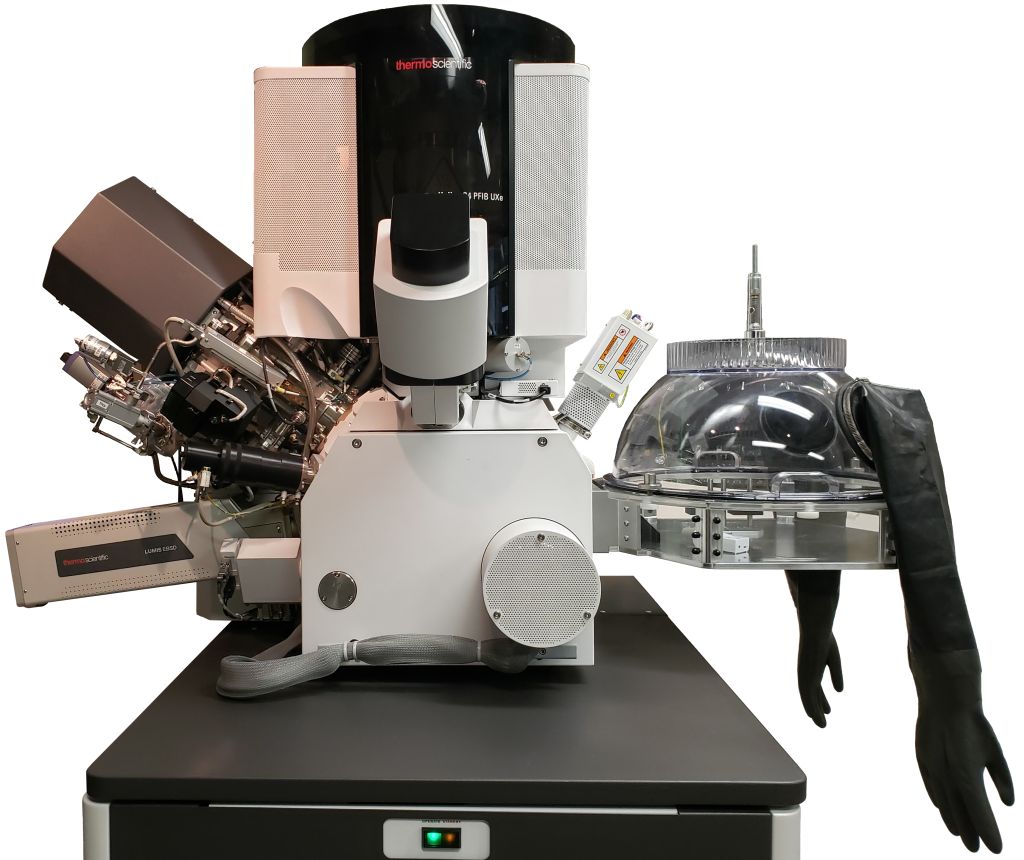
Typical Applications
- Battery research
- Samples containing highly reactive and air-sensitive materials (e.g. lithium or sodium)
- Hazardous materials handling
- Environmental simulation studies
- Sterile sample workspace investigations
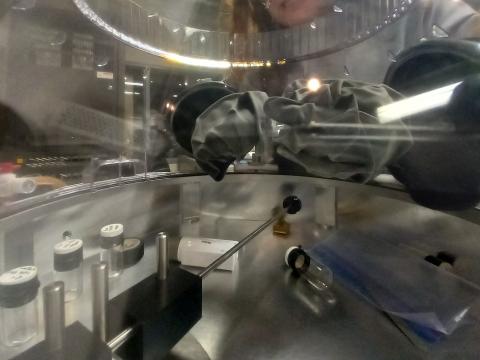
- Transparent, air-tight dome with gloves for sample manipulation
- Inlet valves for introducing gas
- Pressure gauge and over-pressure/relief valve (can be connected to house exhaust)
- Bluetooth connected oxygen and moisture sensor
- Airtight chamber with room for sample prep, stage mounting tools, transfer systems, and other accessories
- Rotatable hemispherical top section allowing for variance in orientation of the operator's station
- Modified venting system for the FIB/SEM (utilizes argon rather than nitrogen)
Experimental Results
EDS measurements for oxygen on lithium metal
To test Noble Dome’s ability to protect samples from atmosphere, the same location on a lithium metal sample was imaged and analyzed with energy dispersive spectroscopy (EDS) when it was in a pristine state, after sitting in an argon environment in Noble Dome for 30 minutes, and after sitting in atmosphere for 30 minutes. Very little change was seen in the surface topography and oxygen counts between the sample in its pristine state and after having sat in the Noble Dome for 30 minutes, however a marked increase in surface oxidation and topography was observed after the sample had sat in atmosphere for 30 minutes.
Pristine sample

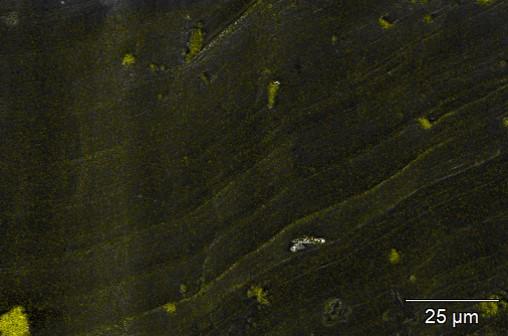
Sample after sitting in Noble Dome for 30 minutes
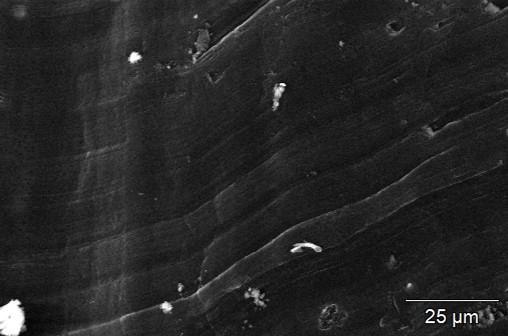

Sample after sitting in atmosphere for 30 minutes
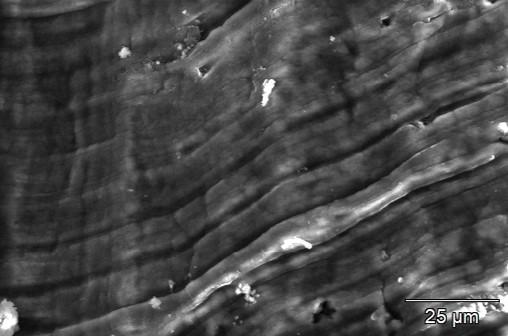

Instrument Contact: camcor@uoregon.edu
